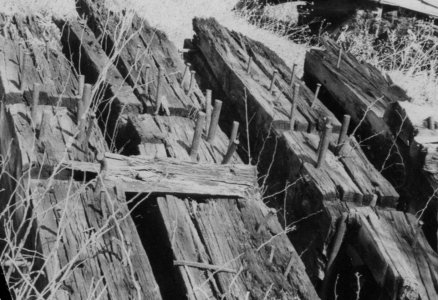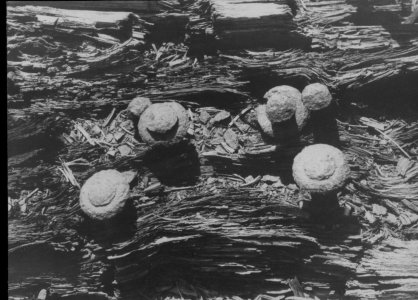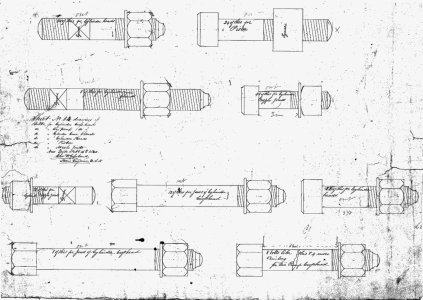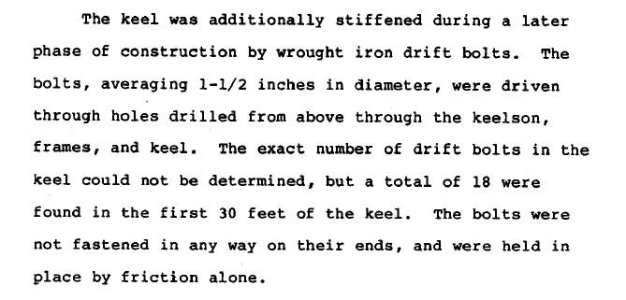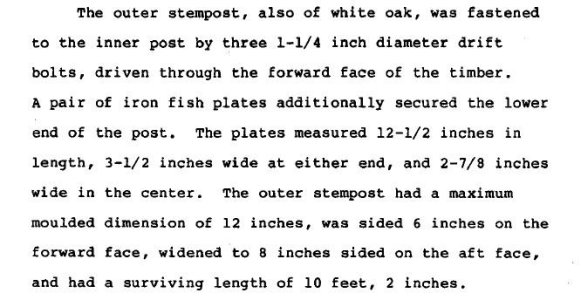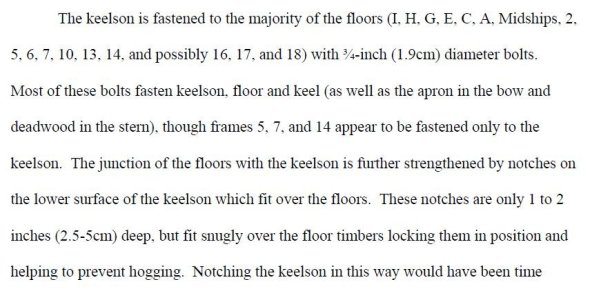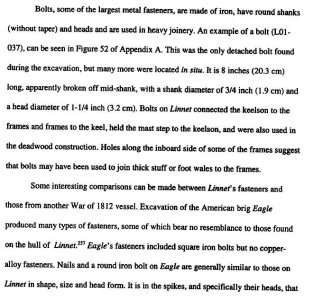Revolutionary war era ships were NOT built with threaded bolts and nuts. The first two photos of Dave Stevens post #2 above accurately shows what these bolts looked like. The second photo clearly shows the bolt end hammered over its clench ring.
Roger
those pictures you refer to are the Argo so those bolts were still in use long after the Revolutionary war era
Registry and Rig Information
Name ARGO
Registry U.S.
Official Number 1427
Rig Steamer
Dimensions and Tonnage
Length 91.00
Width 19.50
Depth 7.00
Gross Tonnage 111.00
Hull Material Wood
Vessel History
Rebuilds Rebuilt by Jenkins at Windsor, Ontario, and launched on June 9, 1864. Read measured at Detroit, MI, on July 8, 1864 (91.42 x 18.16 x 7.5; 118.53 gross). Reportedly had upperworks removed and used as barge across Detroit River, winter of 1872-1873.
Disposition Final enrollment surrendered at Detroit, MI, on January 15, 1879, and endorsed \"out of commission.\"
Build Information
Place Built Detroit, MI
Date Built 1849-00-00




